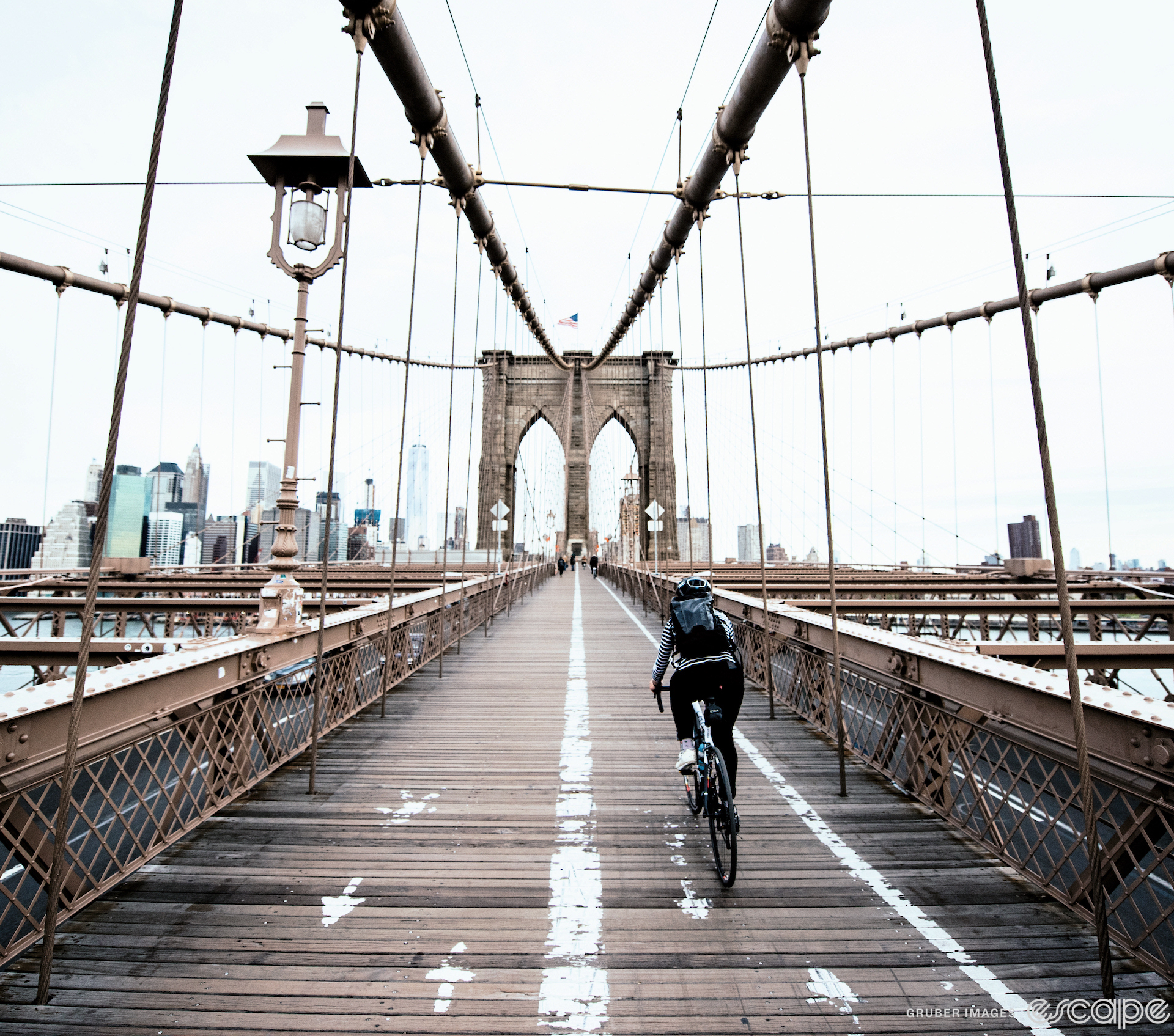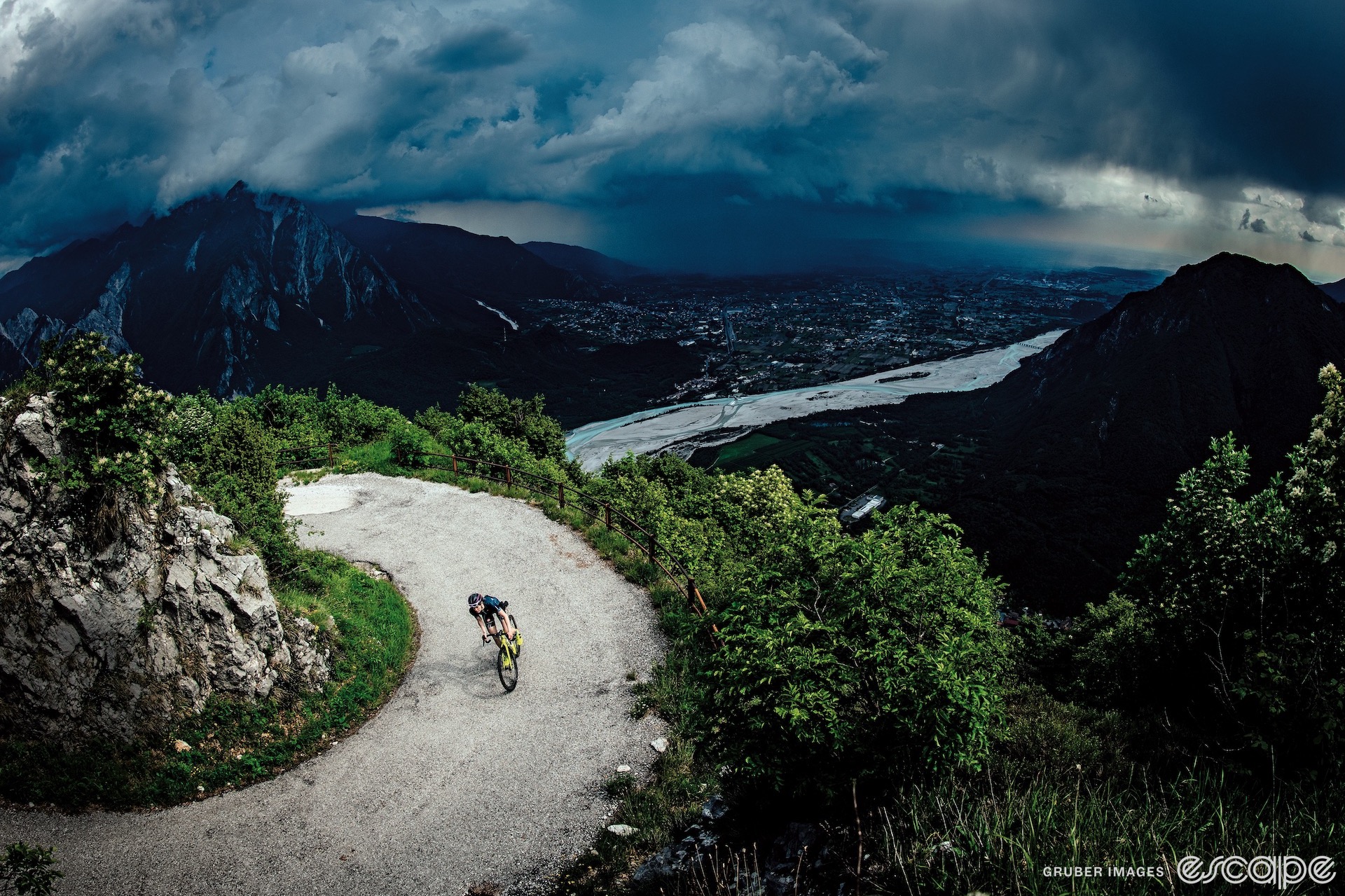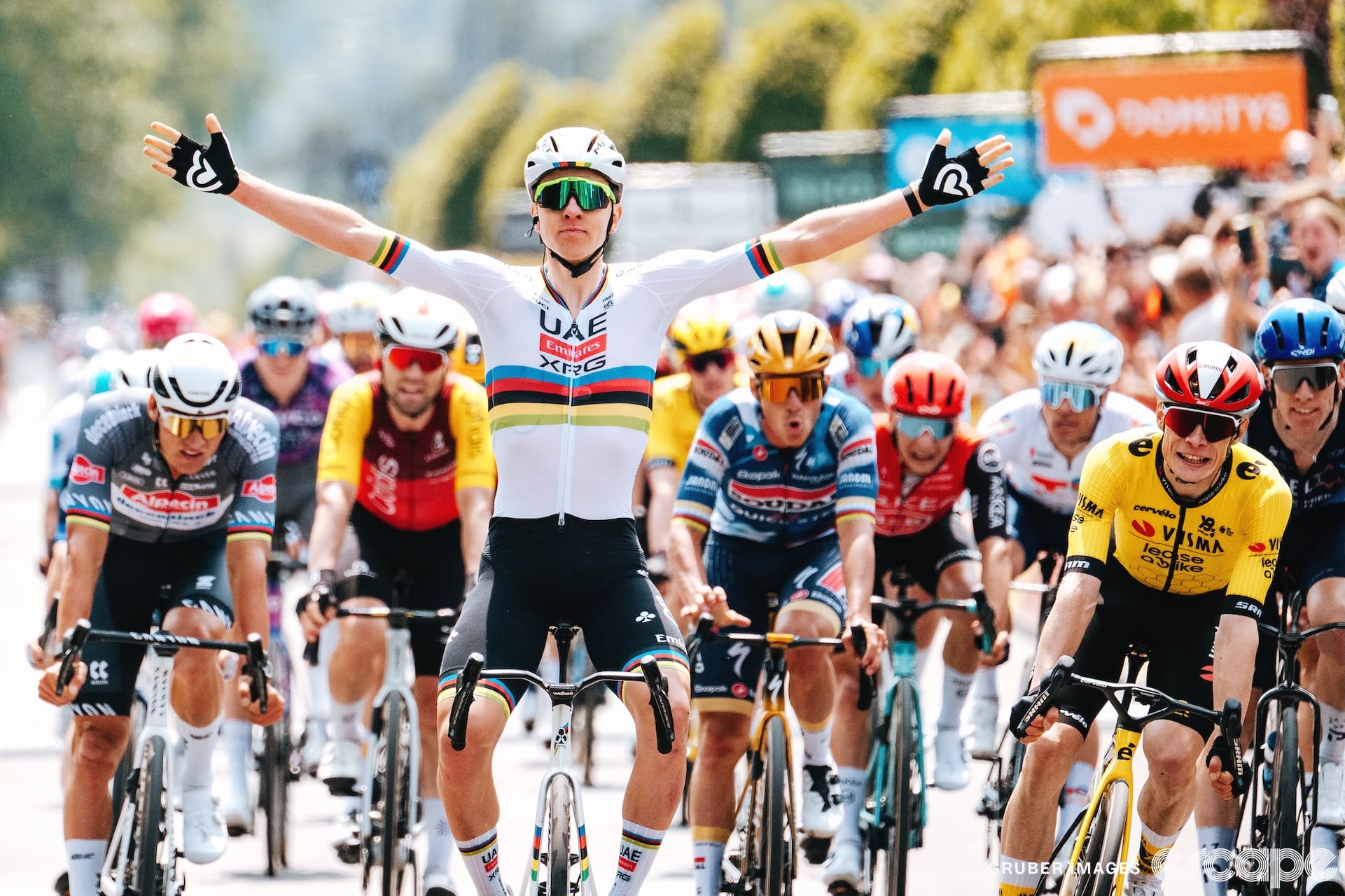Peter Flax is a Los Angeles-based writer and editor and a former editor in chief of Bicycling magazine. This essay sums up the inspiration for his new book, Live to Ride: Finding Joy and Meaning on a Bicycle. Read an excerpt of the book, about Roman Dial's pioneering 775-mile Alaskan bikepacking expedition, here.
*Note: Escape Collective receives no affiliate commissions; as always, we're entirely member-supported.
If you’re reading this essay, then I’m willing to wager that you are at least a little bit crazy about bikes. As a member of Escape Collective, you most likely are passionate about bike racing of some kind and swing a leg over a road or gravel bike as often as you can. I’m also going to guess that you’ve leaned a bike against a wall or window at a coffee shop more than once or twice. Hopefully you’re nodding your head right now.
Bikes have sat at the center of my life for a long time now. My parents bought me a ten-speed Fuji, with a lustrous metallic maroon paint job, Suntour components with downtube shifters when I was in fifth grade and I’ve never looked back. I’ve done my share of bike touring, highlighted by a Seattle to New York epic in 1992, and despite a profound lack of talent and an aversion to structured training, I spent more than a decade racing and chasing fitness. I was an editor at a big bike magazine and in that role, I got to test hundreds of bikes and cover the Tour de France and hang out with racing and bike industry legends. And more recently, I’ve had a long phase as a die-hard utility rider, pedaling nearly 100,000 miles on the frenetic streets of Los Angeles.
All this to say, that riding sits at the center of my life—something that is transportation and therapy, a hobby and an avocation, my favorite way to get lost or find myself. I know now that thousands of people who ride, no matter what kind of bike they primarily use or whether they pedal in technical kit or jeans, feel the same way. Bikes are magical machines that can get us to whatever practical or metaphorical destination we’re trying to reach—it could be the office or a fitness goal or a quiet place to clear our heads. I bet most of you know what I mean.
One thing my lifelong love affair with riding has taught me is that the relationship is always evolving. My riding journey has gone through so many phases, in which the only real constant is that bikes are the best supporting actors in my life story. When I sit on a bike, I feel whole and happy and connected to the world around me.
For a long time—decades—I looked at riding culture and saw this universe as this complex tapestry of bike tribes. There were roadies and mountain bikers and triathletes, all of whom rode different bikes and different kit and liked to troll each other. There were committed transit riders, artful BMX and wheelie kids, adrenaline-seeking downhill riders, stylish casual riders, off-the-grid bikepackers—a nearly endless list of subcultures, each with its own customs and costumes.
But now I see it differently. Because I’ve passed through so many phases in my riding life, I have come to realize that everyone who rides has more in common than they might realize. And I’ve seen many of the walls that traditionally separated subcultures dissolve—with bike racers getting involved in advocacy, with roadies and mountain bikers finding common ground though cyclocross or gravel, with more people using bikes as practical transportation, and with everybody riding to the coffee shop. And I’ve come to see that some of the traditions that informed road-bike culture—this idea that it’s a hierarchy in which people seek expertise like they are judo enthusiasts progressing towards a black belt—do more harm than good. There’s of course nothing wrong with appreciating all the nuances of road racing culture, but I’ve come to see the importance of inclusion. I’ve come to see that everyone who is riding a bike is doing it right.

One day when I was riding my bike to the office—on a multi-use path that meanders along the beach—it struck me that I should write a book about my new perspectives, about all the connective tissue I was seeing and wanting within bike culture. After spending more than a decade embroiled in bike-related discourse on Twitter and writing longform about doping in cycling and riders who have been killed in crashes, I felt a deep desire to do something hopeful and positive. So I decided to write a book that explored a simple question: Why do we ride? I had this strong belief that nearly everyone who rides would have similar answers.
After a few years of thinking, reporting, writing, editing, and design, the book I imagined that morning on the bike path—it’s called Live to Ride—is at last ready to enter the world. In the end, I distilled all the reasons people ride into six major themes—adventure, utility, speed, self-expression, nature, and competition. Each chapter of the book is centered around one of these big ideas, with elements that try to show how surprisingly universal our motivations to ride really are. And along the way I interviewed and profiled dozens of people I know and love in bike culture—legendary bike racers, groundbreaking adventurers, accomplished advocates, bike-industry icons, and more than a few lovable kooks.
As a member of Escape Collective, I’m nearly certain that your interest in riding goes way deeper than race results and recaps. Chances are, you have a strong appreciation for the way that storytelling gives shape to your love of bicycles. You know we inhabit a space full of fascinating characters, where important issues of our time intersect with bikes, where riding can quite literally change peoples’ lives. So I’m hopeful that you’d be interested in and open to a book that aspires to connect everyone who rides.
Ultimately, it’s not about polemics or philosophies. It’s about the joy we feel when we’re in tune with our bodies and a well-engineered bicycle and the natural world, the way riding can clear our heads and connect us with community and express some essential piece of who we are. We are alive in an age where it can be tough to unplug and find adventure, to test yourself and express yourself and experience the idiosyncratic pleasures of drinking warm water out of a bidon or feeling the elements on your face.
People who ride know that bikes can do all this and more. This is something beautiful that we all share, something that can help get more people riding and make it safer for all of us and add meaning to our passion to ride. This is why I live to ride. And I hope you do, too.
Did we do a good job with this story?



